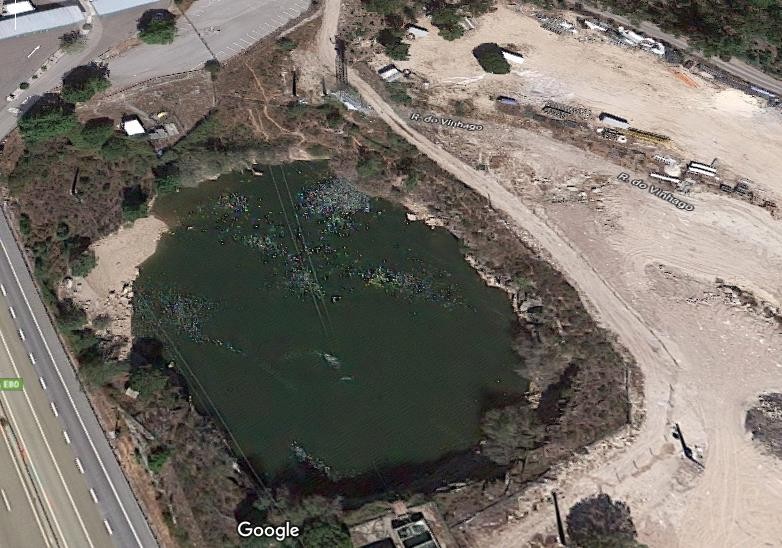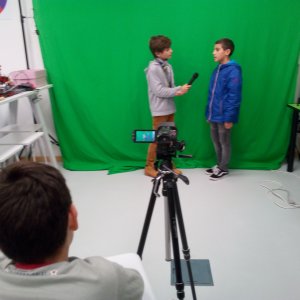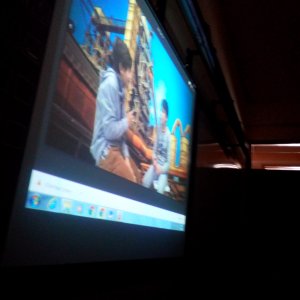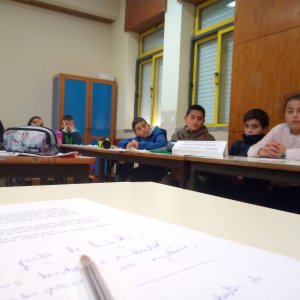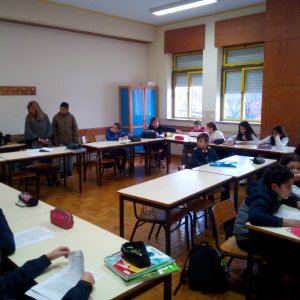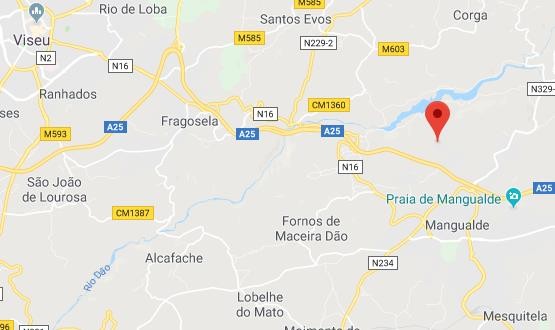
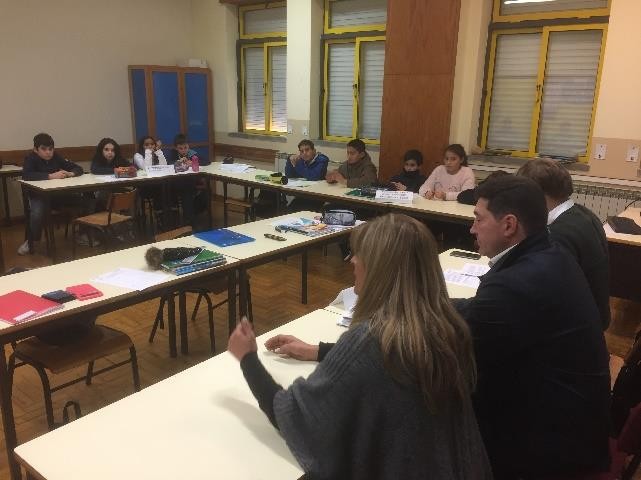
The Problem of WWTP Sludge in Canedo
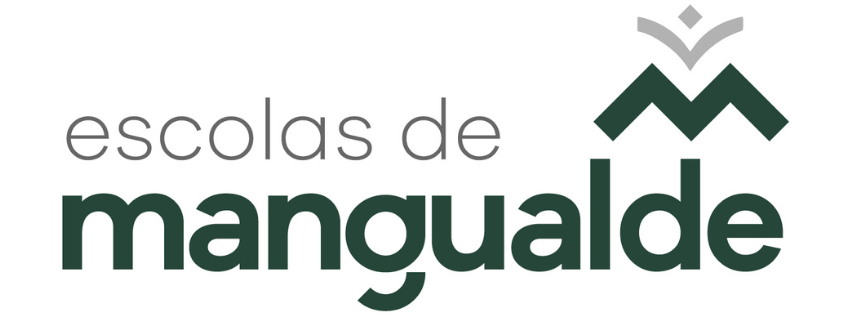
Activity description
Based on a real-life local socio-scientific issue, student groups assume the roles of different stakeholders: the residents’ committee of a locality affected by the accumulation of WWTP sludge, an environmental organization, a private company, and an association for economic and social development. Later, they participate in a debate with the Municipal Councillor responsible for the Environment, with the aim of supporting the municipal decision-making process concerning the issue.
This is an adapted version of an activity developed by Tenreiro-Vieira and Vieira (2014), in which they present an example of role-playing strategy exploration.
The guiding question to be explored through role-play will be: Should the Mangualde City Council continue to support the operation of the company Alberto Pardal II Ambiente SA?
Name tags for group identification, indicating their roles
Support texts
Activity script per group
Videos with interviews of the various actors (with computer, audio and projection setup)
Visit to the location that serves as the basis for the issue and collection of photographs
Production of chroma key videos with students, using scenarios appropriate to the issue and general interview scripts between interviewer and interviewees
Creation of support texts for each role, using screenshots from Google Earth and collection of relevant evidence
Invitation of a city councillor and/or a member of the municipal environment department to participate in the debate
Student profiles
Essential learnings
Activity guides
Activity Introduction
The activity begins with the presentation of the “Letter to the Councillor of the Mangualde City Council” (Text 1, see annexes), which is based on a news article published in the newspaper Centro Notícias on September 23, 2018, titled “BE questions Government about pollution in Viseu and Mangualde.” Students are asked to read the letter aloud to their classmates. To ensure that all students grasp the content of the article, they are asked questions about:
-
The subject of the news piece
-
The entities/social actors mentioned in the article
-
What the accusation is and who is being accused
-
The reasons or arguments given
-
Whether the issue covered is important for society and why
-
Among other points
Students may also be asked whether any of them are from the locality of Canedo and/or have ever heard of the problem mentioned in the article. If so, they are encouraged to share their experience with the class.
In order to broaden the students’ understanding of the situation described in the article and to consider different perspectives, several informative documents (prepared for this purpose — see Annexes 2–5) are distributed among the students. Working in pairs, students are asked to read the documents and highlight the entities/sectors of society/social actors mentioned.
Each group is guided to read aloud key paragraphs from the supporting texts, and students are asked to summarize the most important points from the texts.
Activity Development
To help students structure and record their work, the Student Guide is distributed. Working in groups, they are asked to answer up to Question 3. Once this is complete, the class is divided into four groups (corresponding to the number of social actors needed for role-playing), and roles are assigned accordingly.
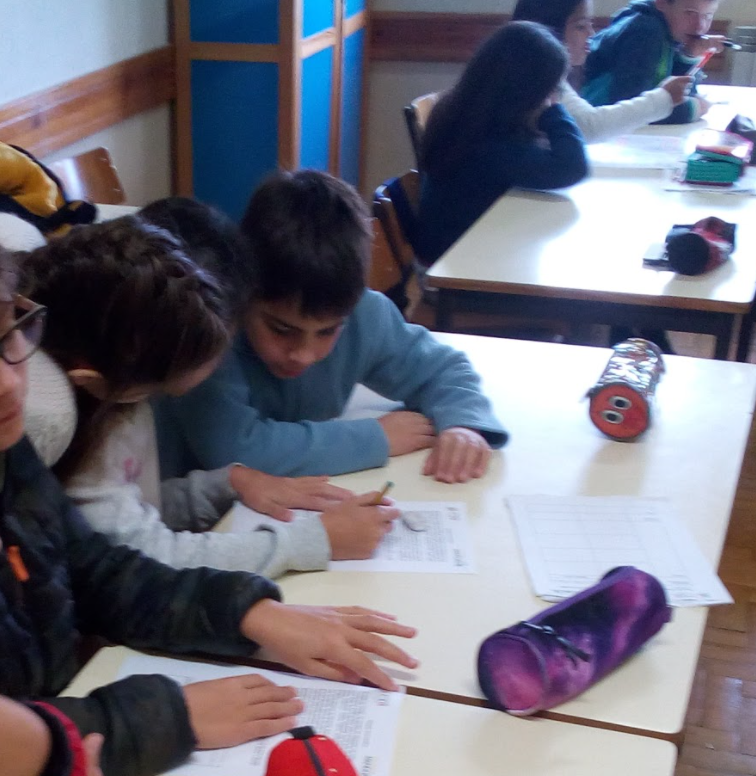
Each group must prepare the performance of their assigned role according to the following guidelines:
-
Research, organize, and record important information to build both their arguments (reasons in favor of the position they will defend) and counterarguments (how to challenge the reasons supporting the opposing position).
-
Produce a video to present at the beginning of the debate that clearly expresses the position they will defend and the reasons that support it.
-
Summarize the key points for their intervention in the debate session, stating: the position they defend, the supporting reasons, and their responses to possible counterarguments presented by other social actors.
-
Organize the video recording of the interviews with the actors in the various roles, using the notes made during the reading of the texts as a starting point.
-
During the debate class, distribute the name tags to each group to be placed on the table for identification.
-
Then, introduce the full-group activity, presenting the different groups and the city councilor/environment department representative, as well as explaining how the debate will work.
-
Show the videos produced in the previous class, and afterwards, invite the councilor to open the debate on the key question:
“Should the Department of the Environment of the Mangualde City Council continue to support the operation of the company Irmãos Alberto Pardal II Ambiente SA?”
-
Guide the role-playing of each group, encouraging students to verbally present appropriate evidence and arguments.
-
After the role-play on the problem-question is completed, ask students to work in groups to describe a set of measures or actions to resolve the conflict, ensuring the population’s quality of life and well-being.
Conclusion of the activity
Ask students to prepare a message to be included in a class video entitled “Class Advice for Taking Care of the Environment.”
Extension activity
The measures proposed by students during the role-play can be included in a letter to be sent to the Environment Department of the City Council, including ideas such as:
-
Pre-drying of sludge before transporting it to the site;
-
Leachate containment basin and soil impermeabilization in the sludge deposit area;
-
Fencing of the lagoon and closure of the existing gate.
Essential learnings
Evidence / Student action
- Discutir a importância da gestão sustentável da água ao nível da sua utilização, exploração e proteção, com exemplos locais, regionais, nacionais ou globais.
- Uso das evidências do texto 3 (Relatório técnico de análises de lamas de ETAR e água da lagoa pela comissão técnica da Câmara no debate) e argumentação em torno da proteção da água e dos solos.
- Desenvolver persistência, autonomia e à-vontade em lidar com situações que envolvam a Matemática no seu percurso escolar e na vida em sociedade.
- Uso das evidências do texto 3 - Relatório técnico de análises de lamas de ETAR e água da lagoa pela comissão técnica da Câmara no debate.
Azevedo, R. T. (s.d.). Gestão e valorização de lamas de ETAR. Naturlink. Consultado em 12 de outubro de 2018 em http://naturlink.pt/article.aspx?menuid=6&cid=92450&bl=1&viewall=true
Barbosa, J. A. (2008). Valorização de Lamas Provenientes do Tratamento de Águas Residuais. [Dissertação de mestrado não publicada]. Faculdade de Ciências e Tecnologia da Universidade Nova de Lisboa. Disponível em https://run.unl.pt/bitstream/10362/7895/1/Barbosa_2008.pdf
Irmãos Almeida Cabral. (s.d.). IAC Ambiente. Consultado em 12 de outubro de 2018 em Centro Notícias. (2018). BE questiona Governo sobre poluição em Viseu e Mangualde http://www.iacabral.com/noticias/64-iac-ambiente
Jornal do Centro. (s.d.). Empresa inunda aldeia com maus cheiros. Consultado em 12 de outubro de 2018 em https://www.jornaldocentro.pt/jornal/regiao/mangualde/mangualde-empresa- inunda-aldeia-com-maus-cheiros/
Secretariat, S. (2009). Edge of sludge treatment reed bed. Consultado em 2 de julho de 2020 em https://commons.wikimedia.org/wiki/File:Edge_of_sludge_treatment_reed_bed_(323156742).jpg
Silva, J. (2018). BE questiona Governo sobre poluição em Viseu e Mangualde. Centro Notícias. Consultado em 12 de outubro de 2018 em https://www.centronoticias.pt/2018/09/23/be- questiona-governo-sobre-poluicao-em-viseu-e-mangualde/
SMAS Almada. (s.d.). Glossário de águas residuais. SMAS @nline. Consultado em 12 de outubro de 2018 em http://www.smasalmada.pt/web/portal/glossario-aguas-residuais
Tenreiro-Vieira, C., & Vieira, R. (2014). Construindo práticas didático-pedagógicas promotoras da literacia científica e do pensamento crítico. Madrid: Organização dos Estados Ibero- Americanos.
The script presented below was adapted from Tenreiro-Vieira and Vieira (2014, pp. 45–47), with the examples of questions provided by the authors in the original work being removed or modified.
Introduction – Problem Situation
In the village of Canedo, in the municipality of Mangualde, at the facilities of a local company, Irmãos Alberto Pardal II Ambiente SA, sludge from wastewater treatment plants (WWTPs) from various parts of the country is deposited, with a landfill as the final destination. This sludge typically contains a certain amount of water with suspended solids, biodegradable organic matter, and sometimes heavy metals.

Knowing the situation in Canedo, the Mangualde City Council, through its Department of Environment, called a meeting with various stakeholders to hear the complaints from the local population and the environmental group Mangualde Verde, as well as from the company and the Association for the Economic and Social Development of Mangualde, in order to make a decision that guarantees both the quality of life and public health of the population and the continued operation of the company.
Problem question: Should the Mangualde City Council continue (or not) to support the operation of the company Alberto Pardal II Ambiente SA?
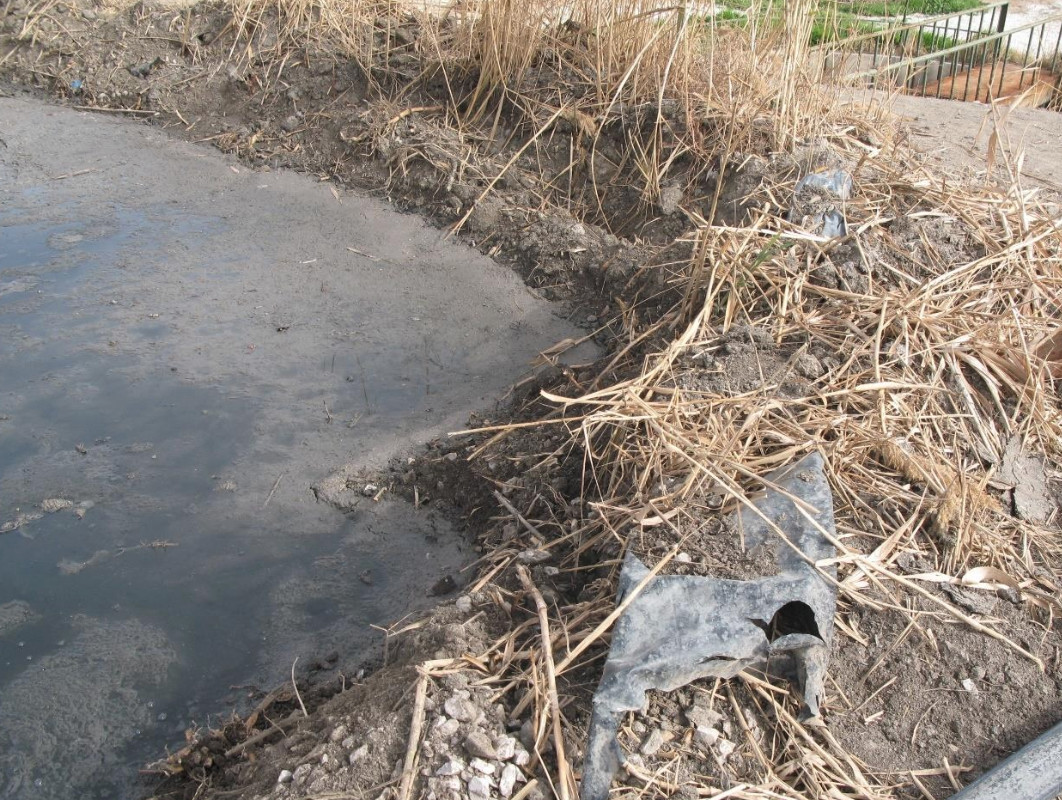
-
Fill in the following table using the different sources of information you use.
|
Sources of information |
Reasons in favor of closing the company |
Reasons against closing the factory |
|
Text(s) in annexes |
||
|
Family and friends |
||
|
Websites, news, other media |
-
For each of the following stakeholders, state what you think each one will advocate regarding the problem-question presented.
2.1 Environmental Group Mangualde Verde
Position they advocate:
2.2. Residents’ Committee:
Position they advocate:
(Write here the position they are likely to defend — e.g., against the continued operation of the company.)
Reasons to present in support of their position:
(List arguments such as environmental pollution, bad odor, health risks, lowered quality of life, etc.)
2.3. Association for the Economic and Social Development of Mangualde
(Group of economists and industrialists from the region)
Position they advocate:
(Write here the position they are likely to defend — e.g., in favor of the company remaining open.)
Reasons to present in support of their position:
(List arguments such as job creation, economic benefits, industrial growth in the region, etc.)
2.4. Company – Irmãos Alberto Pardal II Ambiente SA:
Position they advocate:
(Write here the position they are likely to defend — e.g., against closure, in favor of continuing operations.)
Reasons to present in support of their position:
(List arguments such as legal compliance, waste treatment necessity, investment already made, job maintenance, etc.)
3. Fill in the table presented below, using your research whenever necessary.
-
Social actor
Position to defend
What can we say or ask them to convince or change their opinion?
Environmental Group Mangualde Verde
Residents’ Committee
Association for the Economic and Social Development of Mangualde
Company Irmãos Alberto Pardal II Ambiente SA
4. Watch the videos related to the interviews conducted with the various social actors.
5. Debate/Role Play – Play the role that has been assigned to you, presenting the appropriate evidence and arguments, in the class debate on the key question:
“Should the Environmental Department of the Mangualde City Council continue to support the operation of the company Irmãos Alberto Pardal II Ambiente SA?”
6. After the role play on the key question, work in a group to describe a set of measures or actions aimed at resolving the conflict and ensuring the quality of life and well-being of the population. This text will be sent to the Mangualde City Council to help inform a decision on the issue.
7. Prepare a message to include in the video “Class Advice on Caring for the Environment.”
Annexes – Supporting texts for the various roles
Text 1 – Letter to the Councillor of the Mangualde City Council
Subject: Environmental pollution in Canedo, caused by the company Irmãos Alberto Pardal II Ambiente.
From: Canedo Residents’ Committee
To: Environmental Department of the Mangualde City Council
Dear Councillor of the Mangualde City Council,
In the village of Canedo, in the municipality of Mangualde, there are several sludge deposits from wastewater treatment plants (ETAR) from various parts of the country that have been dumped in the area for over three years.
The population living near the site complains about air pollution and the increasing number of insects in the area. They also complain about the high number of trucks passing through, which often spill sludge along the way.
This situation has been ongoing since 2015, and the issue was already reported to the Ministry of Environment through a petition in August 2016. Following these complaints, the site was inspected by the competent authorities, namely the Regional Coordination and Development Commission of the Centre, the Ministry of Environment, and the National Republican Guard (GNR). The case was closed on the grounds that it did not violate any required regulations. However, the bad smell and insect proliferation continue. According to information we have received, the company responsible for transporting the sludge to these two deposit sites is IAP II Ambiente SA.
In light of the above and based on the applicable constitutional and regulatory provisions, the Canedo Residents’ Committee hereby demands that the Environmental Department and the Honourable Councillor withdraw institutional support or cease defending the operation of the company.
(Adapted from https://www.centronoticias.pt/2018/09/23/be-questiona-governo-sobre-poluicao-em-viseu-e-mangualde/)
Text 2 – Testimony from Inhabitants of Canedo
The Environment and Residents’ Committee of Mangualde has already raised several warnings about the risk of surface runoff from the facilities of Irmãos Alberto Pardal II Ambiente SA into the adjacent artificial lagoon, which could lead to the disappearance of fish living there and infiltration into agricultural land. In addition to these warnings, several residents of Canedo state that:
“The trucks pass through carrying sludge, drive through the village without any kind of cover, and even drop sludge along the roads they travel. The air is unbreathable.”
Another resident stated:
“The smell is very intense in summer, affecting the population here in Canedo. Furthermore, at that time of year, there is a large increase in the number of insects, which is uncomfortable for all of us.”
One of the residents also raised a warning about the lack of a lock on the gate leading to the fenced lagoon area, which could endanger the lives of children playing nearby.
For these reasons, the residents demand that the City Council stop supporting the company’s operations.
Text 3 – Technical Report on Wastewater Sludge and Lagoon Water Analysis by the City Council’s Technical Commission
The water we use in our daily activities—such as cooking, cleaning, bathing, and flushing the toilet—is generally turned into wastewater and discharged into the sewer system. In order to be reused or returned to the environment in a safe and environmentally appropriate manner, it must be treated, especially through a Wastewater Treatment Plant (WWTP).
These treatment plants are primarily responsible for receiving and treating wastewater, which results, among other byproducts, in sewage sludge.
This sludge is not usually “clean or disinfected” and is collected, transported, and sent either for temporary storage or for direct recovery by composting, before being used on agricultural land or sent to a sanitary landfill.
Evidence No. 1 – Heavy Metals in WWTP Sludge
In the case of the sludge collected from WWTPs and deposited at the facilities of Irmãos Alberto Pardal II Ambiente SA, the sludge is intended for disposal in a sanitary landfill. For this disposal to be environmentally safe, the sludge must meet the legal standards regarding heavy metals.
The table below shows the minimum and maximum allowable values for these parameters, as well as the observed values from an analysis of the sludge deposited in Canedo.
|
Parameter |
Minimum value |
Maximum value |
Observed value |
|
(µg/kg dry matter) |
(mg/kg dry matter) |
(mg/kg dry matter) |
|
|
Arsenic |
<100 |
62,7 |
0,313 |
|
Cadmium |
- |
<20 |
1 |
|
Chromium |
30 |
255 |
40 |
|
Lead |
100 |
233 |
320 |
|
Mercury |
0,1 |
4,69 |
6,20 |
Evidence No. 2 – Surface Runoff
Surface runoff refers to the movement of water after it reaches the ground as precipitation. It is influenced by several factors, such as the terrain (slope, storage capacity, shape), vegetation cover (which slows down runoff), precipitation, and soil type (permeable soils, such as sandy soils, generally lead to less surface runoff).
Around the facilities of the company Irmãos Alberto Pardal II Ambiente SA, there is an artificial lagoon located at a lower altitude than the site where the sludge is stored (see figure below). The type of soil is sandy. Considering the above and the location of the company and the lagoon, it can be stated that during periods of heavy rainfall, there will likely be surface runoff from the company’s facilities into the lagoon.

Evidence No. 3 – Heavy Metals in the Lagoon
Heavy metals (metals with high density, such as lead, mercury, and others) are chemically very reactive elements. This means they are capable of triggering various chemical reactions and can accumulate in plants and animals, which are part of the food chain. The water from the Canedo lagoon is intended for human and industrial supply, passing — at least in the former case — through a water treatment plant (WTP) before entering the public supply network. The analyses of the Canedo lagoon water, carried out by an independent entity, revealed the following results:
-
Sample type: Fresh surface waters
-
Sampling date: 11/12/2018
-
Date of receipt: 11/12/2018
-
Start date of analysis: 11/12/2018
-
End date of analysis: 11/16/2018
-
Date of results issued: 11/16/2018
Table 22 – Parameters, parametric values, and observed values in the waters of the Canedo lagoon
|
Parameter |
Parametric value* (µg/l) |
Observed value (µg/l) |
|
Arsenic |
100 |
40 |
|
Cadmium |
5,0 |
2,0 |
|
Chromium |
50 |
30 |
|
Lead |
10,0 |
28,0 |
|
Mercury |
1 |
1,5 |
*Parametric value – corresponds to the maximum allowed values.
Part of the initial text was adapted from Águas do Algarve. (2018). ETAR Sludge. Available at
https://www.aguasdoalgarve.pt/content/lamas-de-etar
Text 4 – Financial report of the company IAP II Ambiente
Irmãos Alberto Pardal II Ambiente SA is a certified waste management company based in Canedo, Mangualde. IAP II Ambiente’s core activity is the collection of various types of waste, possessing the equipment, human resources, and technical means for these operations in order to maximize the reuse and recycling of these products, thus aiming to address one of the main problems faced in the waste collection sector, namely sludge, in Portugal.
Some company data
According to the website Base.gov, which publicly discloses all public contracts between the State and its bodies and the private sector, IAP II Ambiente had a total of 4 contracts in 2018 related to sludge collection from wastewater treatment plants (ETA), amounting to a total value of €272,725.
The company’s total revenue in 2018 was 9 million euros.
The number of full-time employees is 200, most of whom are residents of the Mangualde municipality.
Text 5 – Mangualde Association concerned about the conflict
The Association for the Economic and Social Development of Mangualde is a non-governmental organization, supported by contributions and voluntary work of its members, comprising citizens concerned with the development of the Mangualde region. It supports the continuation of the activity of Irmãos Alberto Pardal II Ambiente SA and suggests facilitating the company’s expansion (more investment), arguing that it will maintain and create several direct and indirect jobs, allowing citizens an improvement in their living conditions.
This association considers that the consequences of the company’s activity on air quality, lagoon water, and soils are minor, and consequently on the health of the citizens, emphasizing that the company complies with the law.
